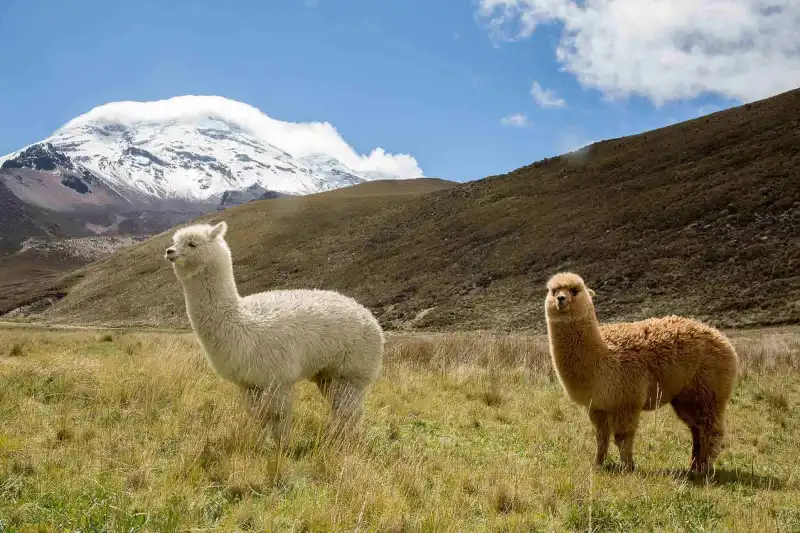Welcome to a culinary journey unlike any other. Peru offers a tapestry of flavors, rich in tradition and taste. Among them, alpaca meat stands out.
This lean, nutritious delicacy captures the essence of the Andes. It’s a must-try for adventurous foodies and culture enthusiasts alike. And there’s no better place to explore it than Peru.
In this post, we’ll dive into why alpaca meat is such a prized ingredient. You’ll learn about its health benefits, sustainability, and unique flavor. And remember, you can try this Peru’s delicacy on our menu.
The Nutritional Powerhouse: Unpacking the Health Benefits of Alpaca Meat
In the heart of South America lies a culinary gem: alpaca meat. This delicacy, beloved in Peru, offers more than just unique flavors. It’s a nutritional powerhouse. Today, we dive deep into what makes alpaca a must-try.
Alpaca meat is lean and packed with proteins. It’s lower in calories and fat than traditional meats. This makes it an excellent choice for a healthy diet. Its high protein content supports muscle growth and repair. It’s ideal for athletes and anyone looking to maintain a healthy physique.
But that’s not all. Alpaca meat is also rich in omega-3 fatty acids. These are essential for heart health. They can reduce inflammation and lower the risk of chronic diseases. Adding alpaca to your diet can boost your overall health.

A Closer Look at the Benefits
Let’s explore the benefits of alpaca meat further. It’s a source of vital minerals like iron and zinc. Iron helps prevent anemia by promoting healthy blood cells. Zinc boosts your immune system. Both are crucial for maintaining good health.
Alpaca also contains vitamin B12, which is vital for nerve function and the production of DNA.
Moreover, alpaca meat is easy to digest. This is an option for those with sensitive stomachs. Its tender texture and mild flavor make it versatile in cooking. You can grill, roast, or stir fry it, making it a perfect addition to any meal.
Incorporating Alpaca Meat into Peruvian Cuisine
Peruvian cuisine takes full advantage of alpaca meat’s benefits. Dishes like lomo saltado showcase its versatility. This stir-fry combines alpaca with onions, garlic, and soy sauce. It’s typically served with rice and french fries, creating a delightful blend of textures and flavors.
Another way to enjoy alpaca meat is in traditional stews. These often feature sweet potato and local spices. They bring out the meat’s natural flavors. Such dishes offer a taste of Peru’s rich culinary heritage.
Peruvian foods like ceviche also adapt well to alpaca cuts. Instead of fish, thin slices of alpaca are marinated in lime juice. This creates a refreshing and healthy dish. It’s perfect for those hot South American days.
Pairing Alpaca Meat with Peruvian Delights
No Peruvian meal is complete without a pisco sour. This cocktail, made from pisco, lime juice, and egg whites, complements the flavors of alpaca meat beautifully. Its sourness cuts through the meat’s richness, balancing the meal.
For sides, consider traditional Peruvian ingredients. Quinoa, a staple in Peru, pairs well with alpaca. Its nutty flavor and high protein content complement the meat’s nutritional profile. Together, they make for a fulfilling and health-conscious meal.

Embracing Alpaca Meat Beyond Peru
Alpaca meat is not just for those in Peru. It’s gaining popularity worldwide as a sustainable and healthy meat option. Its environmental impact is significantly lower than that of beef or pork. This is a smart choice for protein souces.
Moreover, alpaca meat is an invitation to explore new flavors and dishes. It encourages culinary creativity. Whether you’re making a hearty stew or a light ceviche, alpaca meat brings something special to the table.
From Pastures to Plates: The Sustainable Journey of Alpaca Meat in Peru
In the vast landscapes of South America, Peru stands as a culinary leader. Among its treasures, alpaca meat emerges as a sustainable choice. This journey from pastures to plates showcases a commitment to the environment and culture.
Alpacas roam the Andean highlands, grazing on natural vegetation. This low-impact lifestyle ensures the land remains fertile and biodiverse. Farmers work with nature, not against it, to raise alpacas.
Alpaca meat, a staple in Peru, is making waves for its eco-friendliness. Compared to beef or pork, it requires less water and land. This makes alpaca protein a smart choice for those concerned about their ecological footprint.
A Closer Look at Alpaca Farming
Alpaca farming deeply respects traditional practices. Herders maintain a close bond with their animals, ensuring their well-being. This relationship is key to the high quality of alpaca protein.
The process is humane and sustainable. Alpacas are sheared for their wool without harm. This dual-purpose use makes alpaca farming incredibly efficient.
Alpaca then travels from rural farms to Peruvian markets and restaurants. This journey supports local communities and keeps traditions alive. It’s a model of sustainable agriculture in action.
Alpaca Meat in Peruvian Cuisine
Peruvian cuisine celebrates alpaca for its flavor and versatility. Dishes like lomo saltado highlight its tender quality. This stir-fry combines alpaca meat with onions, garlic, and soy sauce, served with rice and french fries.
Other traditional dishes utilize alpaca meat in stews and soups. These recipes often include sweet potato and local herbs. They bring out the meat’s unique taste while providing a hearty meal.
Alpaca meat also finds its way into innovative Peruvian foods. Chefs are experimenting with alpaca burgers and sausages. These new takes on classic fare introduce alpaca protein to a wider audience.
Sustainable Eating: The Alpaca Advantage
Choosing alpaca protein supports a sustainable food system. Its low carbon footprint and efficient land use make it an eco-friendly option. Consumers can enjoy delicious meals while caring for the planet.
Alpaca meat is not only sustainable but also nutritious. It’s a great source of protein and low in fat. This makes it a healthy choice for any diet.
By embracing alpaca, we support traditional farming and sustainable practices. It’s a step towards a more responsible and eco-conscious culinary world.

Pairing with Peruvian Delights
Alpaca meat pairs beautifully with other Peruvian staples. A glass of pisco sour complements its rich flavors. This traditional cocktail, made with pisco, lime juice, and egg whites, is a perfect match.
Sides like quinoa and roasted sweet potatoes enhance the meal. These ingredients, native to Peru, support a balanced diet. Together, they create a feast that’s both nutritious and sustainable.
A Taste of the Andes: Discovering the Unique Flavors of Alpaca Meat
High in the Andes, a culinary secret thrives: alpaca meat. This lean, flavorful meat is a cornerstone of Peruvian cuisine. It offers a taste adventure unlike any other.
Alpaca meat, tender and rich in taste, makes for an unforgettable dining experience. It’s not just food; it’s a journey into Peru’s heart. Here, we explore what makes alpaca cuts a must-try delicacy.
This meat brings together the traditions and innovations of South America. Chefs and home cooks prize it for its versatility. It turns every meal into a celebration of Peruvian heritage.
Unveiling the Flavor Profile
Alpaca proteins is distinct. It’s leaner than beef but boasts a depth of flavor that’s truly unique. This meat is sweet, with a hint of nuttiness, making it a standout in dishes.
It’s perfect for grilling, slow-cooking, and stir-frying. This versatility lets its flavors shine in various recipes. Alpaca meat adapts well, whether it’s the star of the dish or playing a supporting role.
The traditional seasoning of onions, garlic, and Peruvian spices elevates it further. These ingredients enhance its natural taste. They bridge the gap between the ancient and the modern.
Alpaca Meat in Peruvian Dishes
Peruvian cuisine showcases alpaca cuts beautifully. Take lomo saltado, for example. This beloved stir-fry mixes alpaca with vibrant veggies and soy sauce. It’s typically served with rice and crispy french fries.
Another classic is the alpaca stew, combining meat with sweet potatoes and local herbs. This hearty dish is a testament to Peru’s rich culinary landscape. It captures the essence of comfort food in the Andes.
Even in street food, alpaca meat makes a statement. Deep-fried alpaca are a popular choice in high altitude small villas. They offer a quick, delicious way to enjoy this unique flavor.
Pairing with Peruvian Classics
No meal is complete without the right beverage. A pisco sour, Peru’s signature cocktail, complements alpaca dishes perfectly. The sourness of lime juice cuts through the meat’s richness, creating a balance.
Sides like quinoa and roasted sweet potatoes further enhance the meal. These staples, native to the region, support a well-rounded dining experience. They add both nutrition and authenticity to the plate.
Exploring Beyond Peru
Alpaca protein’s appeal extends beyond Peru. It’s gaining popularity worldwide as a sustainable, delicious alternative to traditional meats. Food enthusiasts globally are beginning to appreciate its unique taste and nutritional benefits.
Restaurants specializing in South American cuisine often feature alpaca meat on their menus. They aim to offer an authentic taste of the Andes. This global interest helps preserve and spread Peruvian culinary traditions.




